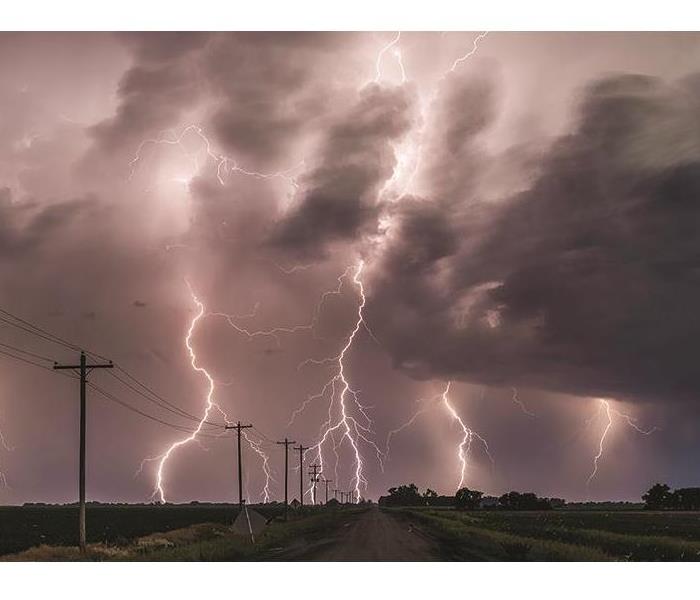Don’t be shocked! Separate lightning facts from fiction.
5/11/2020 (Permalink)
 As afternoon summer storms return, it can help to dispel some of the myths about the energy and science behind lightning storms.
As afternoon summer storms return, it can help to dispel some of the myths about the energy and science behind lightning storms.
Lightning is an awe-inspiring display of nature. Captivating, careening streaks of light brighten the sky and are often accompanied by Earth-shaking booms of thunder. Is it any wonder that people are equal parts fascinated and terrified of lightning? That’s likely due to the immense power contained in lightning storms. Every bolt of lightning delivers up to one billion volts of electricity, states National Geographic. As afternoon summer storms return, it can help to dispel some of the myths about the energy and science behind lightning storms.
MYTH: Lightning doesn’t strike the same place twice. FACT: Contrary to what the familiar expression may indicate, lightning can and frequently will strike the same place twice, offers Britannica. It may occur during the same storm or years or centuries later. There’s no guarantee that a spot already hit by lightning is now immune.
MYTH: Crouch down to avoid a lightning strike outside. FACT: The National Weather Service says that crouching closer to the ground will not make a person any safer outdoors. Moving indoors to a substantial building or a hard-topped vehicle is better.
MYTH: Rubber tires insulate a car from lightning strikes. TRUTH: It’s actually the metal roof and metal sides of the vehicle that channel the lightning down to the ground, helping to safeguard people inside the vehicle. Remember, convertibles, fiberglass RVs and motorcycles are on rubber tires and offer no protection against lightning.






 24/7 Emergency Service
24/7 Emergency Service